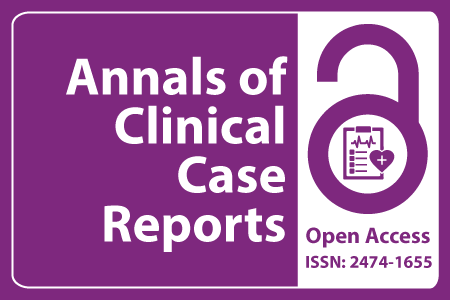
Journal Basic Info
- Impact Factor: 1.809**
- H-Index: 6
- ISSN: 2474-1655
- DOI: 10.25107/2474-1655
Major Scope
- Cardio-Thoracic Surgery
- Neurology
- Pediatrics
- Gastric Cancer
- Psychiatry and Mental Health
- Nutrition and Food Science
- Vascular Medicine
- Gastroenterology
Abstract
Citation: Ann Clin Case Rep. 2024;9(1):2566.DOI: 10.25107/2474-1655.2566
A Novel Homozygous Missense Variant in the BTB domain of KLHL7 Gene Causes PERCHING Syndrome in a Consanguineous Family
Rezaie N1, Samaei NM1,2,3, Gholipour N3 and Balkhi S1,3*
1Department of Medical Genetics, School of Advanced Technologies in Medicine, Golestan University of Medical Sciences, Iran 2Gorgan Congenital Malformations Research Center, Golestan University of Medical Sciences, Iran 3Department of Cytogenetics, Genome Genetics Laboratory, Iran
*Correspondance to: Shayan Balkhi
PDF Full Text Research Article | Open Access
Abstract:
PERCHING Syndrome, is a condition that shares similarities with klhl7-related Bohring-Opitz-like and Crisponi/cold-induced sweating-like overlap syndrome, as well as hydrocephalus congenital. The Kelch Like Family Member 7 gene (KLHL7) plays a significant role in the development of PERCHING Syndrome. In this study, we utilized Whole-Exome Sequencing (WES) to identify disease-causing variations in a patient from an Iranian family affected by PERCHING Syndrome, who had consanguineous parents. In the proband, we detected a novel homozygous missense variation (c.254T>G, p.Val85Gly) in the gene. Confirmation of the variant's inheritance from parents was achieved through co-segregation analysis using Sanger sequencing. The identified variant underwent evaluation for its novelty and pathogenicity by utilizing multiple databases. Furthermore, bioinformatics tools were utilized to predict the three-dimensional structure of the mutant KLHL7 protein. Our report will contribute to broadening the understanding of the clinical and genetic manifestations of PERCHING syndrome. The diagnostic challenges associated with this syndrome are significant, and healthcare professionals often face difficulties in identifying the condition. Accurate and timely recognition of the syndrome requires specialized tests and collaborative diagnostic approaches, which underscores the intricate nature of the diagnosis.
Keywords:
KLHL7; PERCHING syndrome; Whole Exome sequencing; Novel variant
Cite the Article:
Rezaie N, Samaei NM, Gholipour N, Balkhi S. A Novel Homozygous Missense Variant in the BTB domain of KLHL7 Gene Causes PERCHING Syndrome in a Consanguineous Family. Ann Clin Case Rep. 2024; 9: 2566..













